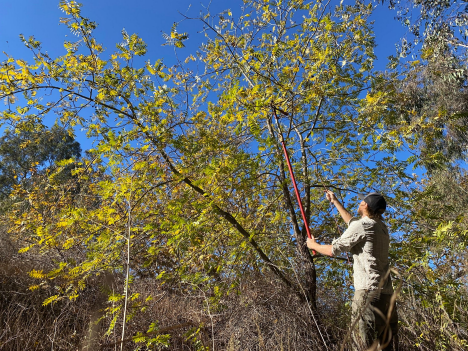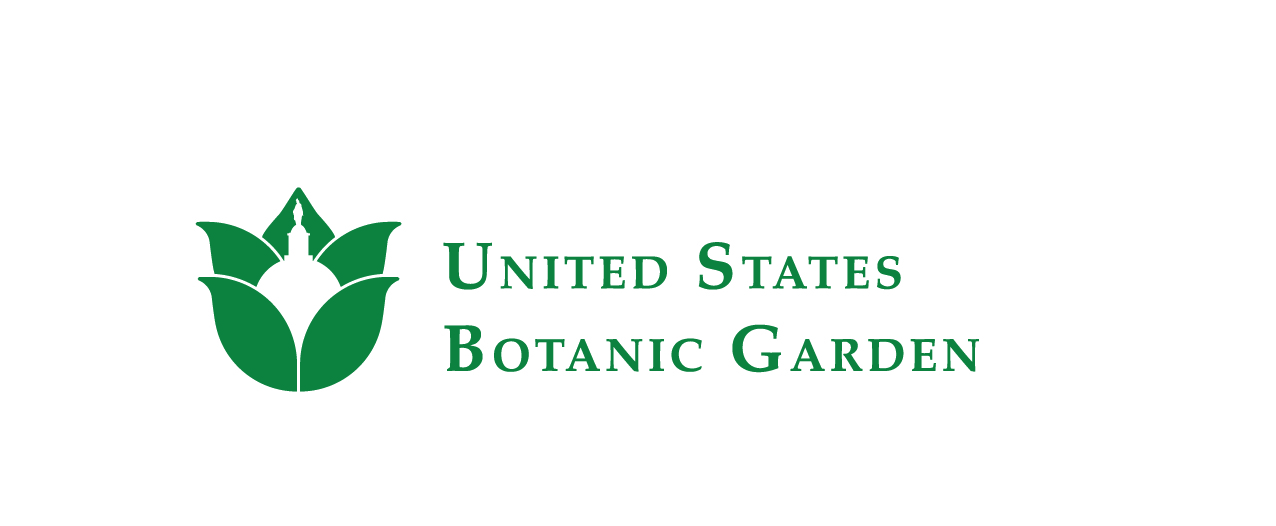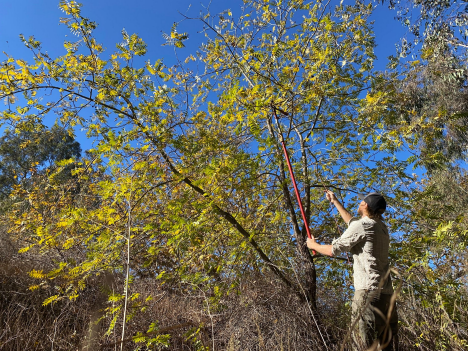Enhancing ex situ collections, San Diego County

-
Status of project
Completed -
Region
North America -
Country
United States of America -
Programme
BGCI -
Workstream
Saving Plants
Enhancing Juglans californica S Watson (California black walnut) representation in ex situ collections from San Diego County occurrences.
Project: Complete
In collaboration with United States Botanic Garden (USBG) and BGCI-US
Project Partner: San Diego Botanic Garden (SDBG)
Walnuts are among the most important nut crops, comprising approximately 20% of global tree nut production worldwide. The genus Juglans L. contains ca. 25 species, including various hybrids. Khoury et al. 2020 assigned all seven native North American species as either urgent or high priority for further ex situ conservation action, including Juglans californica. In particular, only one ex situ collection has been made south of Los Angeles, making San Diego County, the southernmost range of the species, a major geographic gap in ex situ collections.
This project is part of the North American Fruit and Nut Tree (NAFANT) Crop Wild Relative (CWR) Conservation Partnerships a collaboration between BGCI-US and USBG.

Project Goals
To enhance ex situ collections of underrepresented Juglans californica from its most southern range in San Diego County.

Key Achievements
SDBG staff scouted three sites to collect herbarium vouchers and confirm the presence of walnuts on the trees. Vouchers were collected, processed, and pressed, and deposited in the San Diego Natural History Museum. SDBG staff returned to collect walnuts at all three sites and walnuts were collected from seven maternal lines. Walnuts were processed and planted at San Diego Botanic Garden’s conservation nursery.
Forty-one Juglans californica seedlings were successfully propagated and are growing in the SDBG nursery.
There is potential hybridization of Juglans californica with Juglans hindsii where species overlap in range. Leaf samples will be collected in spring 2024 for genetic analysis to determine if there is hybridization.
Plants will be planted at SDBG when seedlings have reached adequate size. Seedlings will be shared with interested partners including The Huntington and the USDA Davis Repository, as desired.